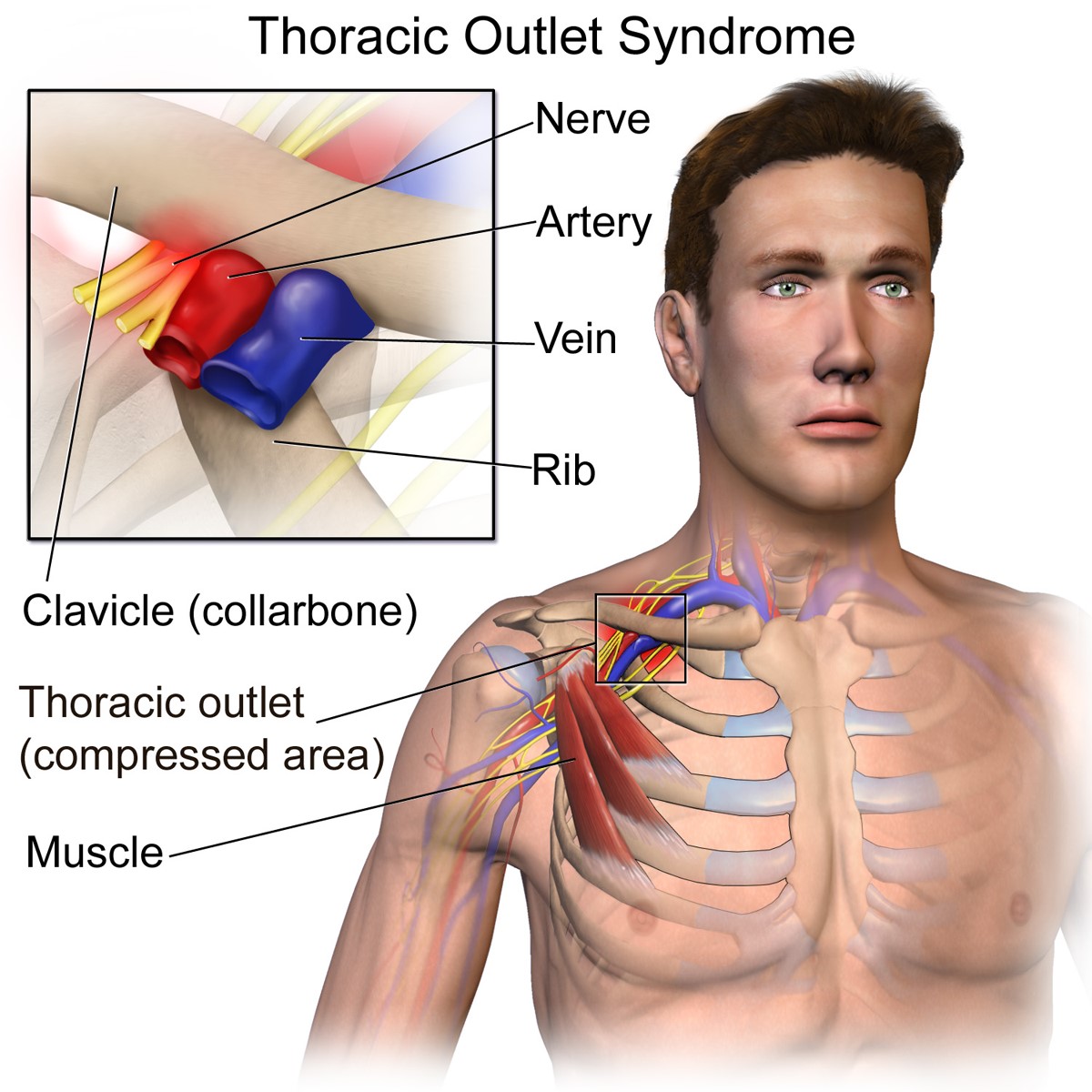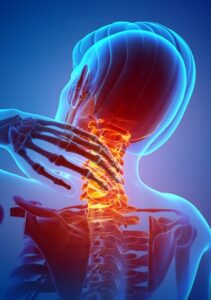One condition that we often come across at the clinic is a collection of symptoms affecting the neck that may cause numbness into the hands – this is called Thoracic outlet syndrome.
Thoracic outlet syndrome can occur when blood vessels or nerves in the space between your collar bone and your first rib become compressed. This may result in pain in your shoulders and neck and even cause numbness in your fingers.
Common causes include repetitive injuries from sports-related activities or your occupation, or physical trauma from a car accident. In most cases we see tightness in the scalene muscles at the front of your neck and tightness in the pectoral (chest) muscles.
Poor posture while sitting and inefficient use of our ribs when breathing can all contribute to this compression. These are easily dealt with using osteopathy and a gentle regime of stretching or re-educating muscle patterns.
Water retention during pregnancy can be a problem affecting these structure and occasionally certain anatomical defects such as an extra cervical rib may aggravate your condition.
Thoracic outlet syndrome symptoms will vary. For example, when your nerves are compressed you may notice numbness or tingling in your arm or fingers, pain or aches in your neck, shoulder or hand and a weakening grip.
When your blood vessels are compromised then you may notice lack of colour (pallor) in one or more of your fingers or your entire hand, a weaker or absent pulse in the affected arm and cold fingers, hands or arms.
In extreme cases, if left untreated for an extended period, Thoracic outlet syndrome can cause significant neurological damage so it’s important to have your symptoms evaluated and treated early.
Osteopathic treatment can be effective in releasing and mobilising soft tissues, giving fast relief. We would also be likely to advise certain exercises to help alleviate some of the symptoms and maintain your improvement.”
If you feel that you may have this condition or any associated symptoms and would like to see Carlo to get some help, please feel free to get in touch and we can arrange an appointment to get you assessed.
Or you can speak to one of our lovely reception team who will find a time to suit you, on 020 8545 0965.





